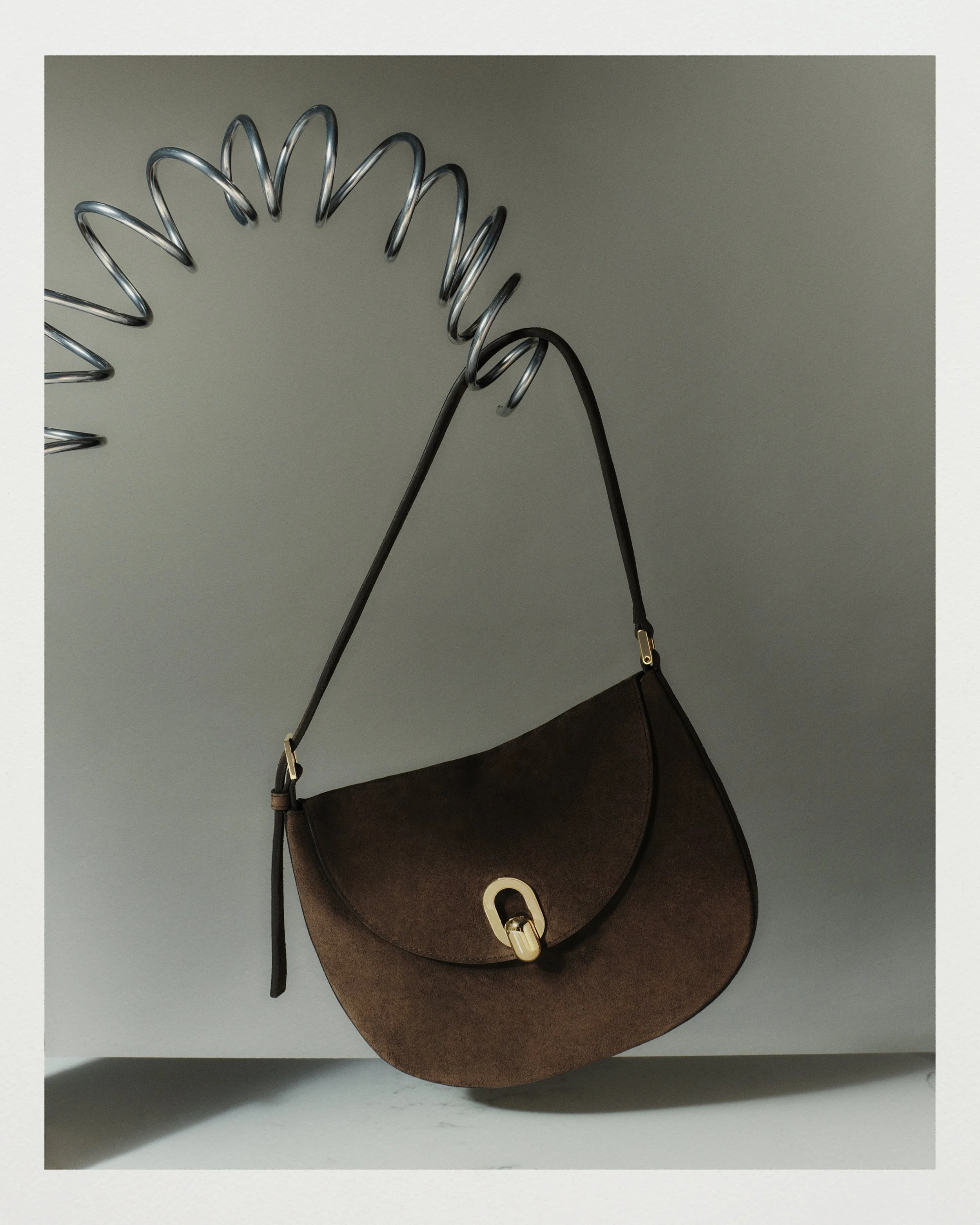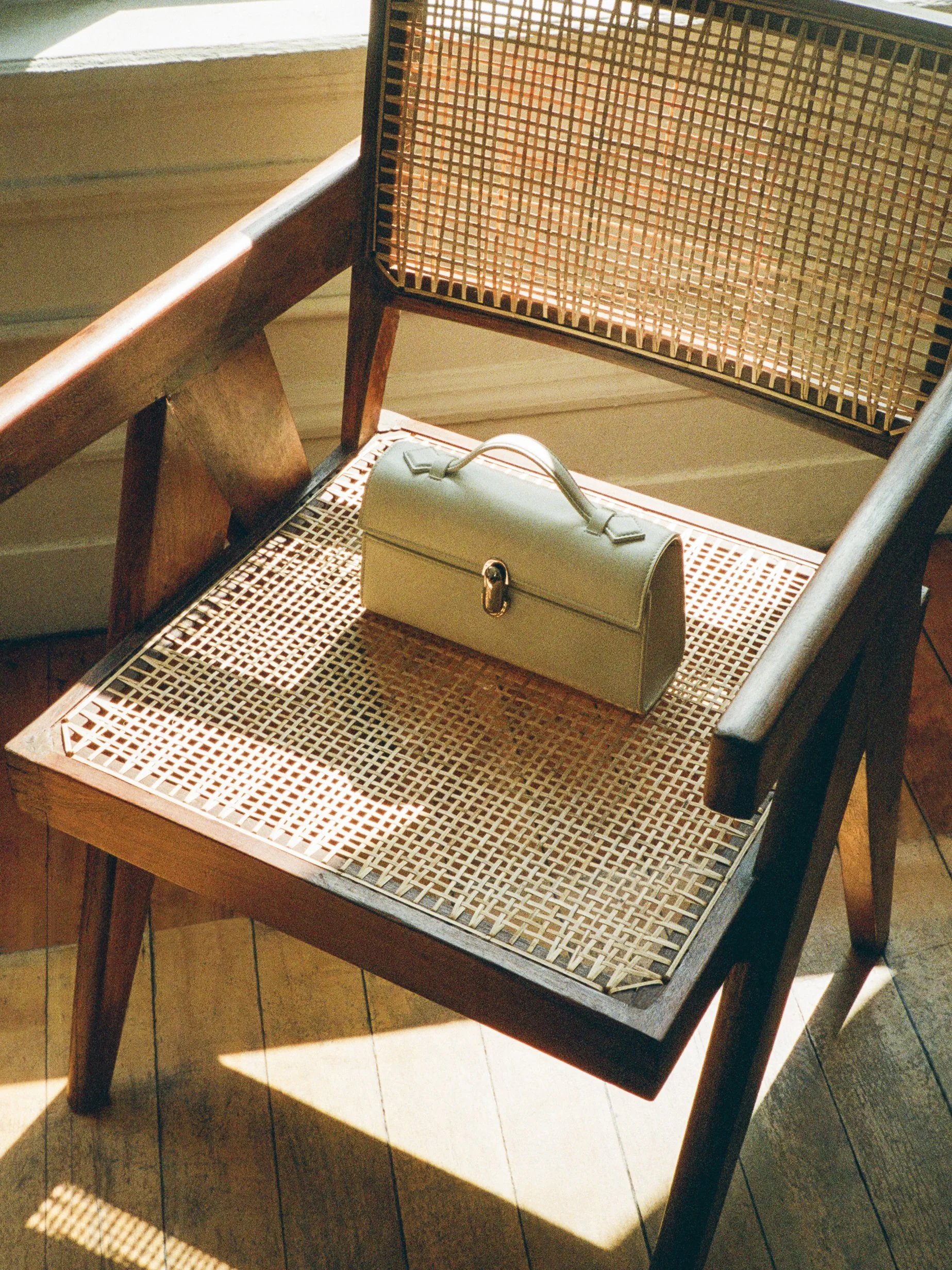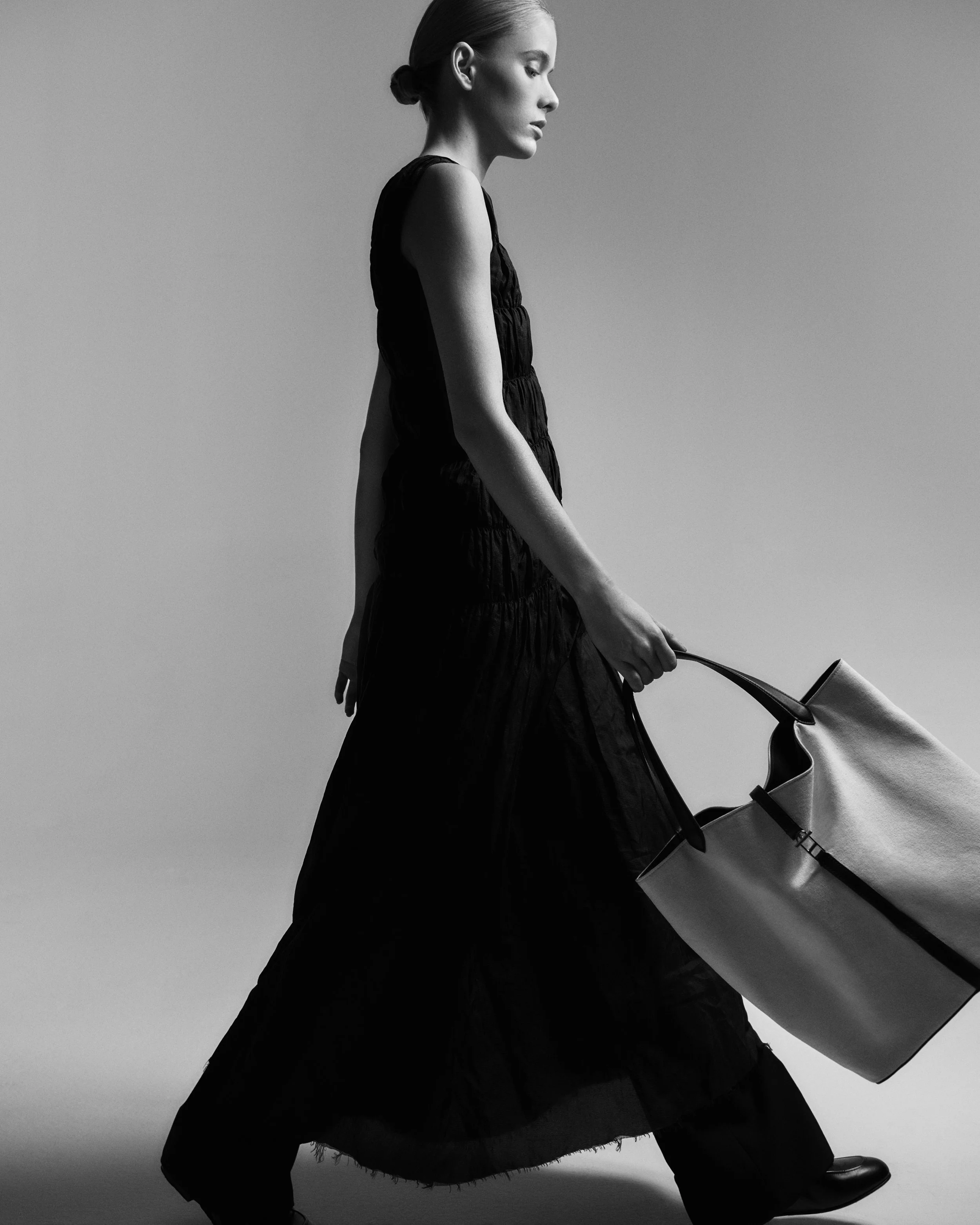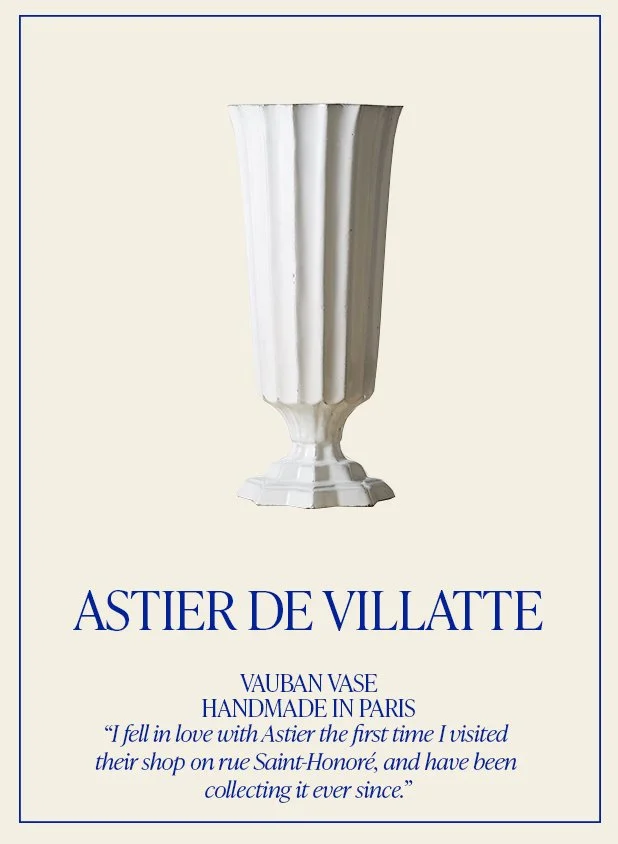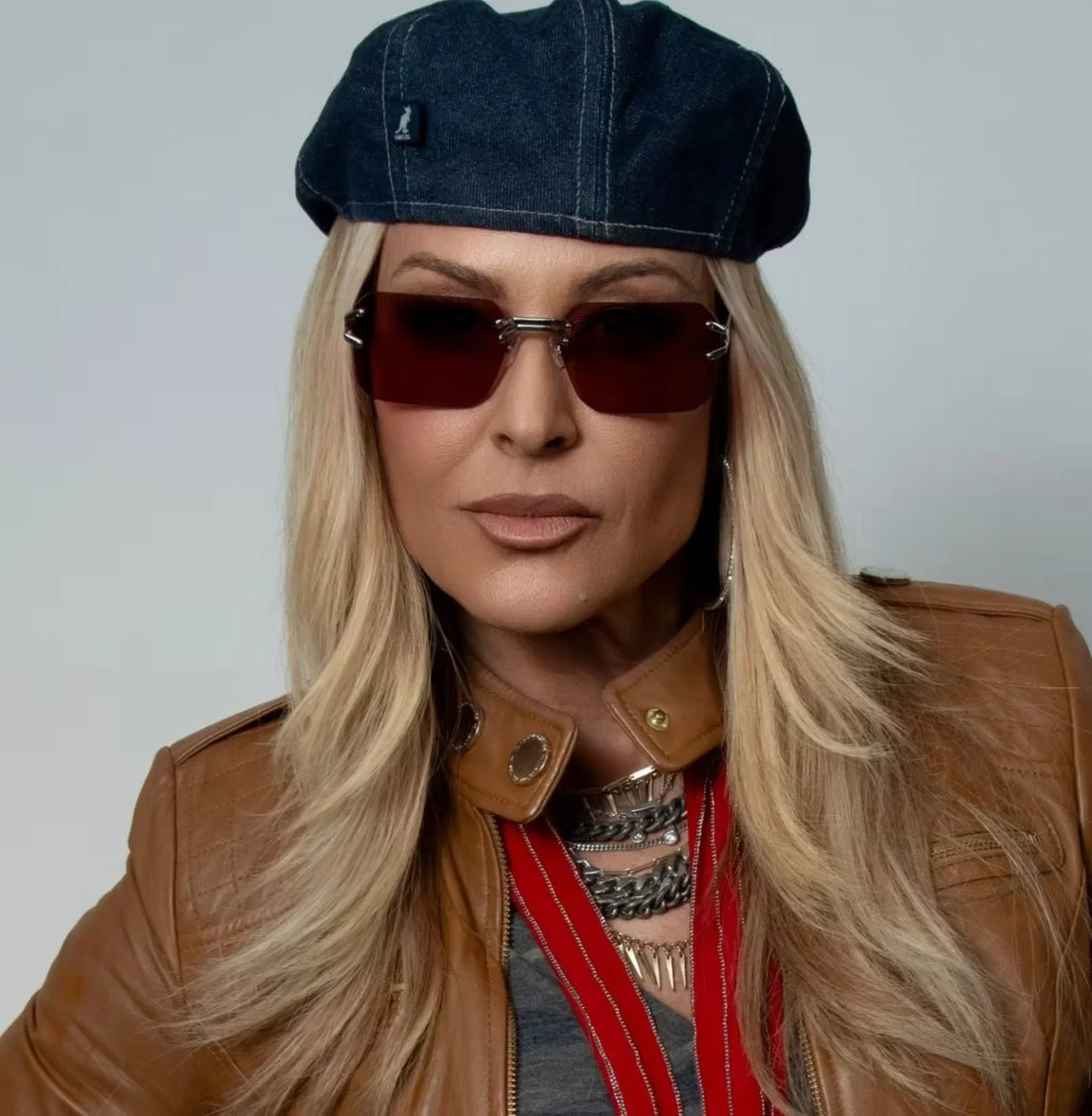After The Row and Khaite, She Built a Luxury Brand Of Her Own
Courtesy of Savette
AMY ZUREK
After The Row and Khaite, She Built a Luxury Brand Of Her Own
By Bonnie Langedijk
Luxury isn’t what it used to be. The constant stream of newness is the antidote to the aspiration and quality luxury products are meant to convey. Many consumers are shying away from trends and logos, and are looking to connect with brands that share their aesthetic as well as their values. One brand embracing a timeless and considered approach is New York-based bag brand Savette. When designer Amy Zurek played with the idea of starting her own brand – after designing bags for The Row and Khaite – she began with the idea of creating timeless designs that could be passed down through generations of women. Merging quality craftsmanship with modern design, Savette is for those who prefer to scour Vestiaire for that one piece over buying the latest trends. Through the considered, sophisticated yet functional approach to design Savette has garnered a group of quiet luxury fans around the brand including TyLynn Nguyen, Emily Ratajkowski and Laurel Pantin. With Savette, Zurek brings luxury back to what it’s always been about, beautiful products you want to cherish over time.
We spoke with the New York-based designer about what she learned from her time at Khaite and The Row, the future of the luxury industry and her collection of Le Monde D’Hermes magazines.
Courtesy of Savette
Courtesy of Savette
B: You started your career working with The Row, Coach and Khaite before launching Savette. Three companies with varying value systems and approaches to craftsmanship vs. commerciality. Did your time at these brands influence your approach to design?
Amy: My experiences at these companies gave me perspective on very different strategies and philosophies of product development and manufacturing. It informed my thinking when I found Savette. As a designer, you always want your vision to dictate the final product, but it’s important to understand how to make strategic decisions if you want the product to be commercially viable. It’s a balancing act.
“Where you tell STORIES and the format that they take is essential.”
B: How do you find that balance?
Amy: Start by designing the piece exactly as you’d like it, in an ideal world without compromises. If this turns out to make the product more expensive than makes sense from a business perspective, find ways of adjusting to make it fit the need. For instance, could you use a different leather? Add a seam to make it more efficient to cut? Change the lining?And so on. What elements are the most important to keep intact, and what can be compromised to create a product that’s beautiful and also achieves a certain price point.
B: What are the key ingredients for a great bag?
Amy: Uncompromising design, function and craftsmanship make a great bag.
B: I can imagine there’s a difference between designing bags for an existing brand and designing for your own bag brand. How did you translate the existing universes of the brands you worked with into a bag? What’s your approach?
Amy: When you work with an existing multi category brand, you consider the world they’ve already built. What are the design codes you can build upon? What is the design philosophy? Who is the customer? What can we make that feels fresh and desirable but remains true to these themes? It’s a collaborative process alongside the creative director and other design teams to build out a unified collection.
What has it been like to build that world for yourself? What are some of the biggest challenges you’ve faced in building that brand universe within a single category brand?
Amy: It's certainly more challenging to build a brand universe within a single category, which is perhaps why so many single category brands quickly expand into other products or take on collaborations. But there are so many subtle touch points through which to build the world for the customer. Everything from the imagery to the branding, social media presence, social community, activations like in person events, and so on. I utilize all of those channels, and in the end I think having restraint, not bombarding the customer with brand communication but rather letting the product shine, is an important part of the Savette universe in itself.
Courtesy of Savette
B: Is there anything in particular that inspires you when you’re designing?
Amy: I have concrete sources I love to reference: vintage pieces, vintage trade periodicals. I even look to fine art and jewelry for details such as the metal closures. But an equally important element is less concrete. It’s more of a vibe, a feeling. What do I really want right now? What do I think women around me want? And how do I tap into that and create the most beautiful possible version of it.
B: I love that you think about functionality and desirability. Sometimes I think the combination of the two get lost in the design process. Do you have any particular people in your life that influenced your approach to style or helped develop your aesthetic?
Amy: My mother’s and grandmother’s disparate styles influenced me, and ultimately the Savette bags themselves. My grandmother’s style is irreverent and modern. She introduced me to modern art and collected modernist jewelry. From Georg Jensen to William Spratling sterling from Mexico, and various others from her travels. My mother’s style is more traditional. She wears Gucci, Goyard. The luxury, sophistication and craftsmanship of those products made an impression on me when growing up.
B: With the women in your life introducing you to design through fashion and accessories, is there a specific bag that really stands out to you or you appreciate in terms of design?
Amy: There are so many icons, but one that I find particularly interesting is the Fendi Baguette. Its simple construction is chic and easy to wear, but it’s also the perfect blank canvas for animation. The bag has been brought to life in literally hundreds of colors and materials over the years, and that type of versatility and timelessness is a rare thing to achieve in design.
You launched Savette in 2020. What was it you were missing in the bag market that made you launch your own brand?
Amy: I wanted to create bags that were minimal and elegant but not austere. Pieces with highly considered materials, craftsmanship and construction, but with a subtly recognizable signature element. I also noticed a growing disparity between contemporary and luxury markets, and felt that there was an opportunity for a high-quality but not completely unattainable brand to step in and offer an alternative. The vast majority of luxury handbags available today are made by large heritage houses, but I hoped that through quality, design and competitive price point, we could carve out a space for a new type of modern luxury brand.
B: We also live in a world where luxury has different meanings to different people. What is your definition of it?
Amy: It’s easy to conflate the concept of luxury with price, or with recognizability. But for me, luxury means something more akin to consideration. A luxury bag is one made of beautiful leather, with harmonious forms that is a joy to wear and use.
B: I couldn’t agree more. I also believe that the luxury industry is moving at a quicker pace than ever before, and some consumers are looking for brands that have a slower, less seasonal take on fashion.
Amy: For so long we were inundated with newness season after season, and while that’s still the case to some extent, more and more women are beginning to reconsider how they’re buying and how they’re building their wardrobes. They’re making fewer, better purchases, and choosing investment pieces that they’ll love for years to come. But with the advent of these investment purchases, there’s so much potential for the products to offer more and become smarter. For products to tell their own story through technology and continue their connection to the brands that produced them.
Courtesy of Savette
Courtesy of Savette
B: Completely, there are so many opportunities when it comes to storytelling around products. Amy: That’s why I’m so fascinated with this new area of technology called digital product IDs. I know a lot of the industry isn’t ready to talk about web3, but to me this is the area where I can really envision the technology adding value.
B: In what way?
Amy: In our current system, brands track individual products via barcodes from the time they’re produced to the time they’re sold in retail stores. But once a product is in the hands of a customer, there is no longer any record of it, which makes no sense because that’s when the life of the product should really begin.
B: That’s so true. While that’s where the journey becomes interesting.
Amy: Savette bags are designed to be timeless, loved for years and passed on. With digital product IDs, a bag’s whole lifecycle could be knowable and dynamic. You could see when your Savette bag was produced, what store originally sold it, whether it was ever resold, you could get in contact with Savette to ask a question or learn more about the product. For brands and customers that value authenticity and sustainability, this technology will be a game changer. We’re hoping to be able to implement it soon.
B: That’s really interesting. That would give consumers much more visibility on a product’s journey. What’s your approach to growing the brand? We were just speaking about how many consumers are always looking for newness. How do you balance that with your beliefs of creating timeless designs?
Amy: It’s tricky because there is a constant appetite for newness, but newness for its own sake isn’t beneficial to anyone if the products aren’t quality. Even if it’s only one or two new styles a season, I would prefer to make things I can really stand behind.
B: That’s true. You’ve taken a very timeless and minimalistic approach to content and imagery too. Could you speak to your approach of building the visual Savette world? What was it you wanted to convey?
Amy: When I started Savette, I had a very clear vision of the products I wanted to create, but the rest of the visual world wasn’t as clear, so I essentially trusted my instincts. Similarly to how I began the bag design process, I looked back at campaigns and product photography from the past as a starting point. The great part about creating imagery is that it’s a collaboration with photographers and other creatives, and I’ve been lucky to work with people whose visions have helped to build out our world.
B: It’s always great to see other creatives’ take on your brand universe. It sometimes makes you see your own products in a new light. Speaking of old campaigns and product photography, I read you’re also a Le Monde D’Hermes magazine collector.
Amy: I collect lots of magazines, but I especially love Le Monde D’Hermes because it’s an incredible exercise in world-building for a brand. From the quiet, dignified femininity of the Margiela-era collections to the fantasy stories of igloos built of silk scarves, the brand is giving us a window into the many facets of who the Hermes woman could be, all through artful photography of exquisite products.

